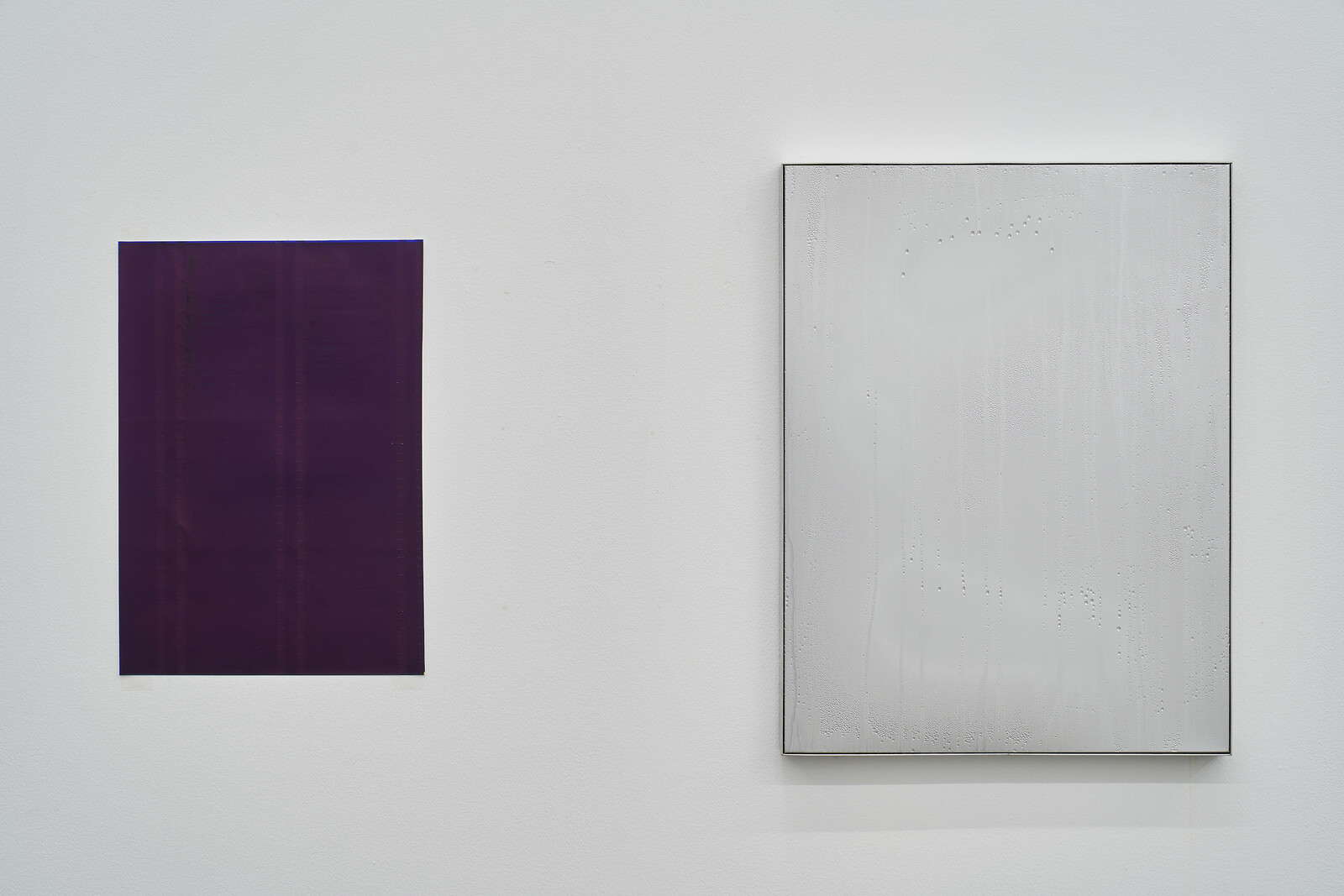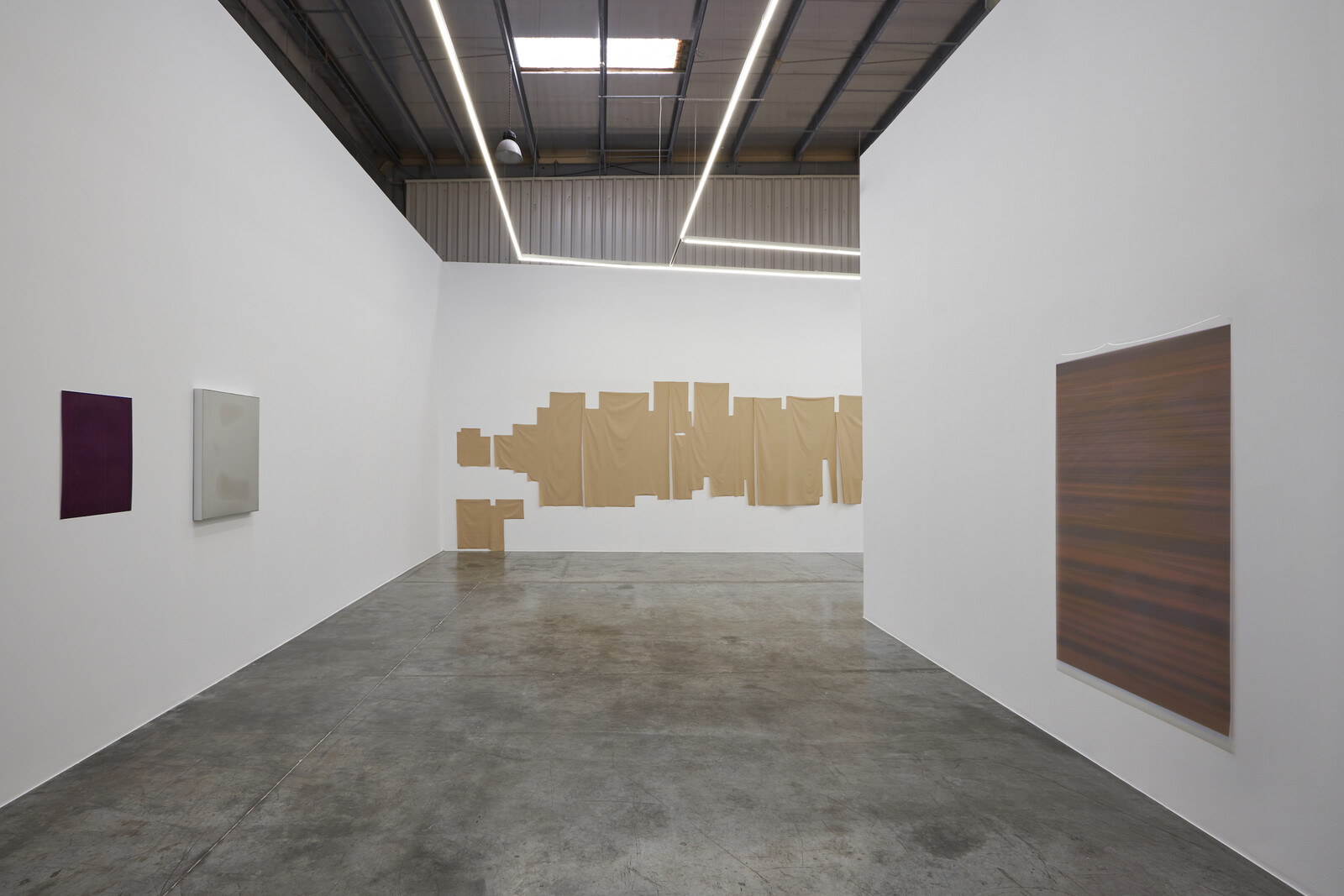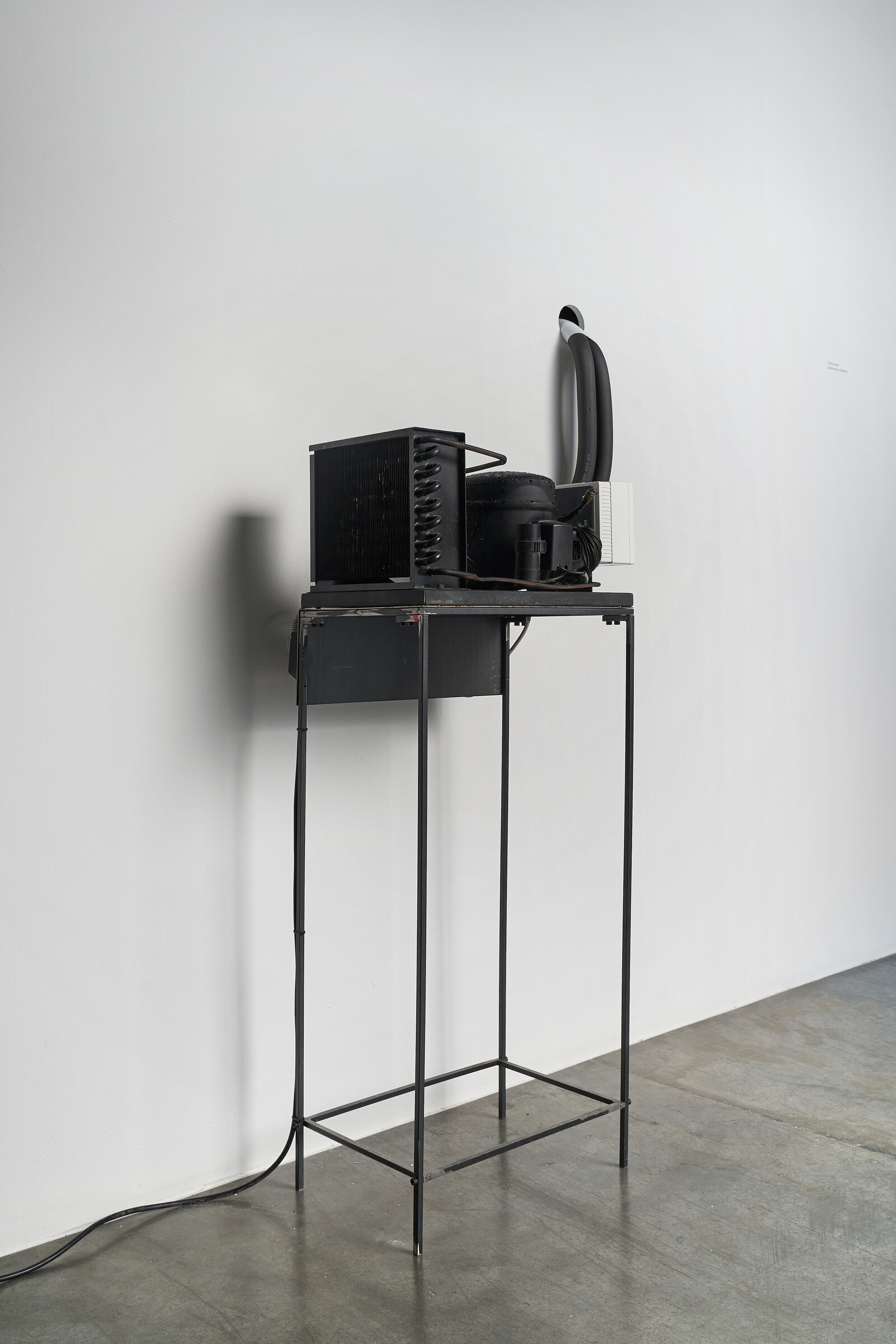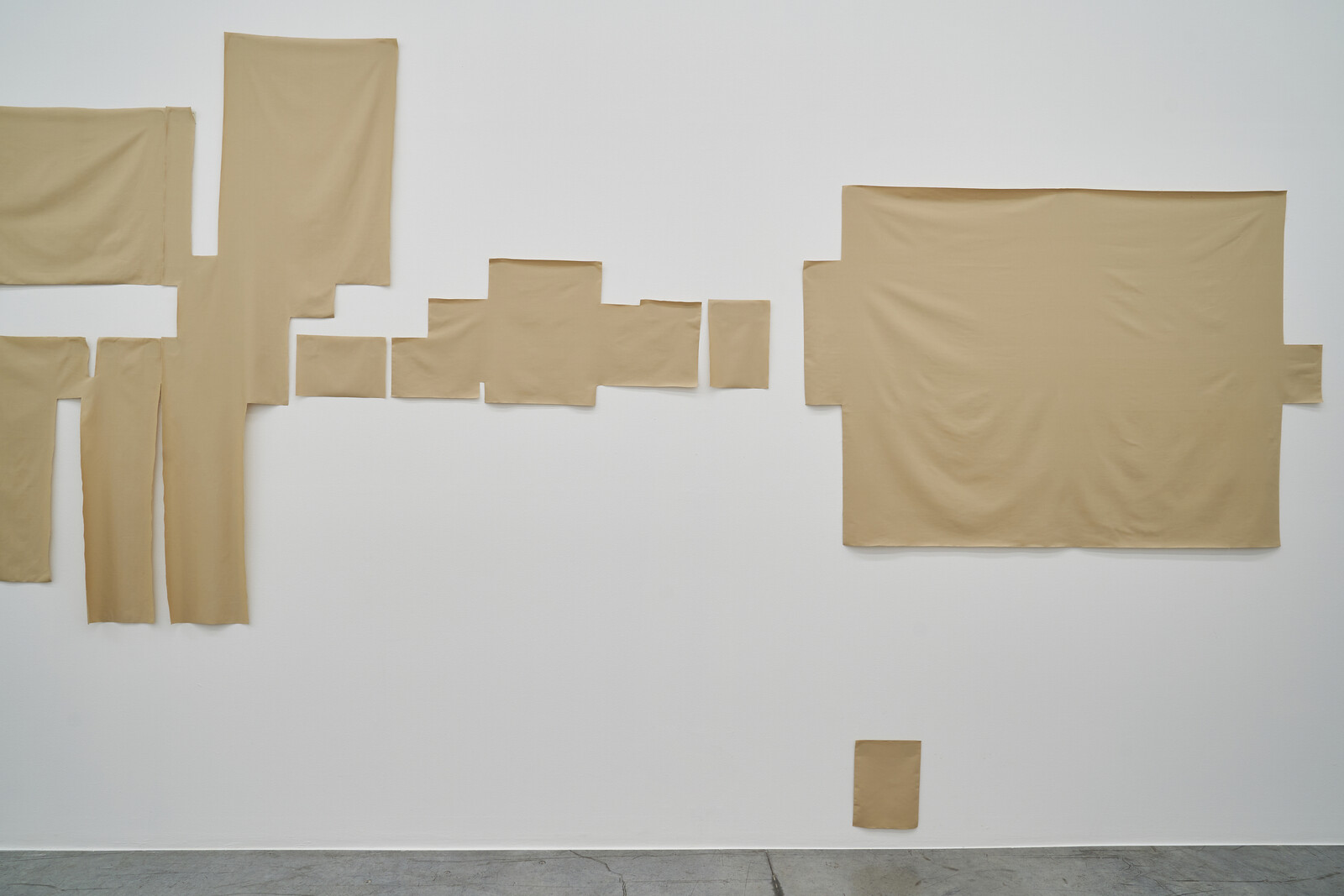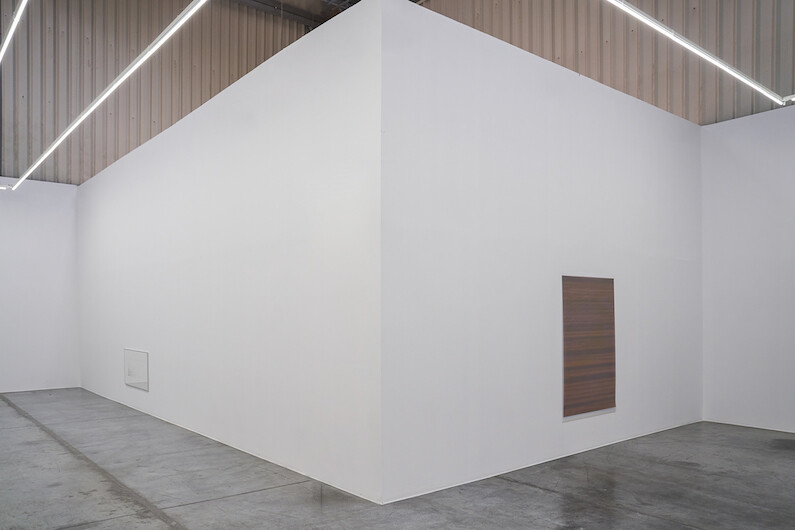Summer, muggy and punishing. In another city we might rely on our bodies to index its various accumulations: sunlight, sweat, melanin. Here, we use our cars. Steering wheels and leather seats that scald palms and thighs and—I had forgotten until I found myself hurtling down the highway unable to see—windows that fog up with the contrast between the hot, soupy air outside and our blessedly air-conditioned interiors. Since moving back to Dubai from Brooklyn earlier this year, I’ve been thinking a lot about terroir. What would work that reflects these atmospheric conditions, the filmy dust and sticky heat, look and feel like?
In Caline Aoun’s “Sedimentary Matters,” the uber-minimalist gallery is recast as an alluvial plain. There’s a rare sense of overflow and sensuous excess that overwhelms the space’s usual affective straitjacket. Things accrete into a material typology: ink, shadows, humidity, and the ghosts of all the other shows that have happened there. Upon entering the space, viewers encounter Condensations of the Invisible Space (all works 2021), a machine placed upon a high, spindly table with attached piping that goes through the wall. Those more mechanically literate might identify a fridge and compressor parts. On the other side is an aluminum plate, chilled to subzero and blooming with water vapor and little droplets of dew that seem, impossibly, to resist gravity. Humidity is made both physical and visible, to moving effect.
Nearby are two inkjet prints. Cyan and Yellow, 4 Hours and 42 minutes is surprisingly not green but instead a rich Tyrian purple, velvety with saturated ink. It looks the way that orris root smells, a powdery violet. As the title suggests, it is made from overprinting yellow and cyan monochromes for close to five hours; we might think of it as a kind of graphic score too. The paper is covered with artifacts of the printing process. Horizontal striations in black or indigo, and lighter vertical lines that mark the path of the printer head, like tire tracks or desire lines, or simply running your fingers over a dusty surface.
A second, much larger print (Untitled, 8 Meters) is printed onto transparent transfer film. From a distance it has the slightly blurred quality of badly rendered wood grain, the kind you might find on cheap printed contact paper. Its horizontal bands do not however suggest geological strata so much as a desert landscape. This work records a more active intervention on the part of the artist, who jerked and pulled the film during the printing to exaggerate the movement of the printer head in a kind of action printing. There’s something disappointing about this. All works in the show function as ledgers of time and its passage in some way. But there’s a kind of perfect machinic alchemy inferred in the other works, unmarred by the human hand, even though Aoun is responsible for the parameters and conditions of their being.
I wonder if it’s productive to read Dubai into everything I see, but something about this city, and its inexorable production and reinvention of self, makes it hard not to. This is a place predicated on transience, with a hotpot model of multiculturalism in which people are dipped in and out—either your visa expires or you do. Unlike a melting pot there’s little melding and assimilation, but instead only vestiges and traces. In the art scene this maps to institutional memory or its lack, at least until it’s time to conscript artists or movements into the national narrative.
Covering one long wall is Fictional Accumulation of Real Shadows’ Past, a rather lovely gesture in which Aoun has mapped the shadows of every work ever hung on that gallery wall and cut them out of tan cotton fabric. (There’s not so many; like most shows in this space, this is very sparely hung.) The preponderance of rectangles with occasional cutout slits invokes the crenelated walls and embrasures of the mud brick forts that still dot the UAE. For a visitor who has attended most of the shows in this space over the past nine years, it conjures up a very biennial-like sensation, where you feel the spectral presence of works you might have seen in past editions. A last work on view here is a detail from Aoun’s previous show at the gallery, in which she installed a fountain filled with ink, and papered over the nearest wall to catch the spray. Everything is very beautiful and bittersweet and a little too precious.
